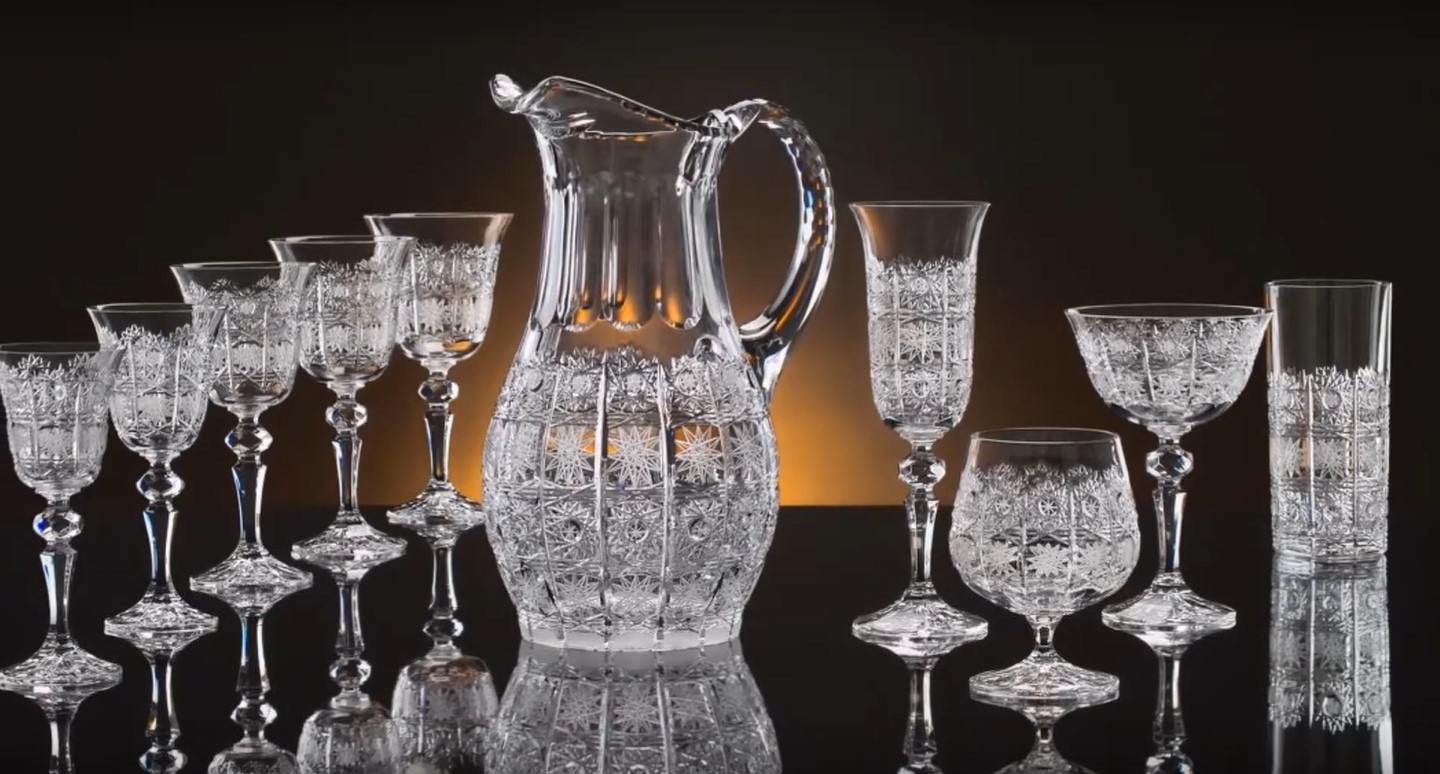

Tableware
What Is Crystal Glassware
Modified: January 18, 2024
Discover the elegance and beauty of crystal glassware for your table settings. Enhance your dining experience with exquisite tableware that exudes sophistication and style.
(Many of the links in this article redirect to a specific reviewed product. Your purchase of these products through affiliate links helps to generate commission for Storables.com, at no extra cost. Learn more)
Introduction
Welcome to the world of crystal glassware, where elegance and refinement meet functionality. Crystal glassware has long been cherished as a luxurious addition to any table setting. With its sparkling clarity, intricate designs, and timeless appeal, crystal glassware adds a touch of glamour to special occasions and everyday dining alike.
But what exactly is crystal glassware, and what sets it apart from regular glassware? In this article, we will delve into the definition, history, composition, and benefits of crystal glassware. From understanding its differences to caring for it, we will guide you through everything you need to know about this exquisite tableware.
So, let’s raise a glass and embark on a journey to explore the captivating world of crystal glassware!
Key Takeaways:
- Crystal glassware, with its higher lead content, exceptional clarity, and intricate craftsmanship, adds a touch of luxury and elegance to any table setting, making it a timeless choice for special occasions and everyday dining.
- The history, composition, and benefits of crystal glassware highlight its enduring appeal and superior qualities, offering a delightful sensory experience and a symbol of refined taste for those who appreciate the finer things in life.
Read more: What Is The Best Brand Of Crystal Glassware
Definition of Crystal Glassware
Crystal glassware is a type of glass that is considered to be of superior quality due to its distinctive characteristics. Unlike regular glassware, crystal contains a higher percentage of lead oxide, typically around 10-30%. This higher lead content gives crystal its exceptional brilliance, clarity, and weight.
In addition to its lead content, crystal glassware is also known for its fine craftsmanship and attention to detail. Artisans skillfully cut, etch, or engrave intricate patterns onto the surface of crystal glassware, adding to its beauty and elegance.
One key distinction of crystal glassware is its ringing sound when lightly tapped. This is due to its unique composition, which allows crystal to vibrate at a different frequency compared to regular glass. The resonant tone produced by crystal is often described as a delightful musical note.
It is important to note that the term “crystal” is not universally defined and can vary depending on geographical regions and manufacturing standards. However, in general, the higher lead content and superior craftsmanship are the primary factors that differentiate crystal glassware from regular glassware.
History of Crystal Glassware
The history of crystal glassware stretches back centuries, with its origins rooted in ancient civilizations. The art of glassmaking dates back to the Roman Empire, where skilled craftsmen developed techniques to create clear and durable glass. However, it was not until the 17th century that crystal glassware as we know it today began to emerge.
The city of Venice, Italy played a pivotal role in the development of crystal glassware. Venetian glassmakers, known as “maestri,” honed their craftsmanship and perfected the techniques of creating fine glassware. With their mastery of glassblowing and the discovery of new mineral additives, such as soda ash and lime, Venetian crystal glassware became highly prized for its clarity and brilliance.
During the 18th century, crystal glassware gained popularity across Europe. Renowned glasshouses, including Baccarat, Saint-Louis, and Waterford, were established during this time, solidifying their place as pillars of the crystal glassware industry. These prestigious glassmakers continued to refine their techniques and introduced innovative designs, further elevating the appeal of crystal glassware.
The 19th and 20th centuries witnessed a rise in industrialization, leading to advancements in glass manufacturing technology. This allowed crystal glassware to be produced more efficiently and in larger quantities, making it more accessible to a wider audience. Many households began to cherish crystal glassware as a symbol of sophistication and refinement.
Today, the tradition of crafting crystal glassware is upheld by skilled artisans in various countries around the world. While Venice and France remain renowned for their exquisite crystal, other countries such as Germany, Czech Republic, and the United Kingdom have also made significant contributions to the industry.
The history of crystal glassware is a testament to the timeless allure of this exquisite tableware. From ancient civilizations to modern times, crystal glassware has retained its position as a symbol of elegance, craftsmanship, and refined taste.
Composition of Crystal Glassware
The composition of crystal glassware is a key factor in its unique qualities and visual appeal. While regular glassware is primarily made from silica (sand), crystal glassware contains additional elements that contribute to its distinct characteristics.
One of the defining features of crystal glassware is its higher lead content. Traditionally, crystal glassware was made with a lead oxide content ranging from 10% to 30%. The inclusion of lead oxide enhances the refractive index of the glass, resulting in its exceptional brilliance and clarity. Furthermore, the higher density of lead gives crystal glassware a substantial weight, adding to its luxurious feel.
In addition to lead, crystal glassware also contains other elements such as silica, soda ash, and potash. Silica provides the structure and stability to the glass, while soda ash and potash act as fluxing agents, lowering the melting point of the glass and making it easier to work with during the manufacturing process.
To achieve the desired transparency and purity, manufacturers carefully select and refine the raw materials used in crystal glassware production. The quality and purity of the materials directly impact the final product’s clarity and brilliance.
It is worth noting that in recent years, there has been a shift towards lead-free crystal glassware due to health and safety concerns related to lead exposure. Lead-free crystal is made by replacing the lead oxide with other elements like barium, zinc, or potassium. While lead-free crystal glassware may not possess the same level of brilliance as traditional lead crystal, it still offers impressive clarity and durability.
The precise composition of crystal glassware can vary from one manufacturer to another, as each may have their specific recipes and formulas. However, the common thread among all crystal glassware is the inclusion of lead or lead-free alternatives, which contribute to its distinct beauty and quality.
Differences between Crystal Glassware and Regular Glassware
While crystal glassware and regular glassware may appear similar at first glance, there are several key differences that set them apart. Understanding these distinctions can help you make informed choices when selecting the right type of glassware for your needs.
1. Composition: The main difference between crystal glassware and regular glassware lies in their composition. Crystal glassware contains a higher percentage of lead oxide, which gives it exceptional brilliance and clarity. Regular glassware, on the other hand, is made primarily from silica (sand) and does not contain lead.
2. Refractive Index: Due to its lead content, crystal glassware has a higher refractive index than regular glassware. This means that it has a greater ability to bend and reflect light, resulting in a more dazzling sparkle and play of colors.
3. Weight and Thickness: Crystal glassware is generally heavier and thicker compared to regular glassware. The higher density of lead in crystal contributes to its weighty feel, providing a sense of luxury and durability.
4. Clarity: Crystal glassware boasts exceptional clarity, with minimal distortion or impurities. Regular glassware may have slight imperfections or slight greenish tint due to the iron content in the sand used to make it.
5. Sound: When tapped lightly, crystal glassware produces a distinct and melodious ringing sound. Regular glassware, on the other hand, typically produces a duller and less resonant sound.
6. Craftsmanship: Crystal glassware often undergoes additional processes such as cutting, etching, or engraving, showcasing intricate designs and patterns. This level of craftsmanship is typically not found in regular glassware.
7. Price: Due to the higher lead content and craftsmanship involved, crystal glassware tends to be more expensive than regular glassware. The luxurious appearance and superior quality justify the price difference for those seeking a premium tableware experience.
It is important to note that although crystal glassware is often associated with elegance and luxury, regular glassware has its own merits. Regular glassware is more affordable, widely available, and suitable for everyday use. It is also generally dishwasher-safe, whereas crystal glassware may require more delicate hand washing and care.
Ultimately, the choice between crystal glassware and regular glassware depends on personal preferences, budget, and the desired occasion or aesthetic. Both options offer their own unique qualities and can elevate your dining experience in different ways.
When cleaning crystal glassware, avoid using harsh chemicals or abrasive sponges as they can damage the delicate surface. Instead, use a mild dish soap and a soft cloth to gently clean and dry the glassware.
Read more: How To Clean Crystal Glassware
Varieties of Crystal Glassware
Crystal glassware comes in a wide range of shapes, sizes, and styles, catering to various preferences and occasions. From stemware to barware, here are some popular varieties of crystal glassware:
1. Wine Glasses: Wine glasses are a staple in any crystal glassware collection. They typically feature a stemmed design, with a bowl that allows for swirling, enhancing the aromas and taste of the wine. Different wine glasses are designed specifically for red, white, and sparkling wines, ensuring maximum enjoyment of each variety.
2. Champagne Flutes: Champagne flutes are tall and narrow glasses, designed to showcase the effervescence and elegance of champagne. The elongated shape helps preserve the bubbles, while the narrow opening concentrates the aromas for a more enhanced tasting experience.
3. Cocktail Glasses: Cocktails glasses, such as martini glasses, are distinguished by their sleek and sophisticated design. The classic martini glass features a V-shaped bowl and a long stem, allowing for easy swirling and elegant sipping.
4. Whiskey Glasses: Whiskey glasses, commonly known as tumblers or rocks glasses, are short and robust. They are designed to accommodate the various types of whiskey and offer a comfortable grip. Some whiskey glasses also feature a thick base, allowing the whiskey to be swirled without spilling.
5. Decanters: Decanters are not technically glasses, but they play a crucial role in the presentation and serving of wine and spirits. Crystal decanters feature elaborate designs and shapes, enhancing the aesthetic appeal while allowing for proper aeration of the beverages.
6. Highball and Lowball Glasses: These glasses are commonly used for serving mixed drinks, such as cocktails or spirits with mixers. Highball glasses are taller, while lowball glasses are shorter and wider. Both offer versatility and are suitable for various beverages.
7. Goblets and Stemmed Glasses: Goblets and stemmed glasses are larger, more ornate pieces of crystal glassware. They are often used for special occasions or as decorative pieces. Goblets are versatile and can be used for wine, water, or desserts, while stemmed glasses are typically used for cocktails or specialty drinks.
8. Beer Glasses: Crystal beer glasses come in various shapes and sizes, each designed to enhance the aroma and flavors of different types of beer. From pint glasses to tulip glasses, there is a wide range of options available for beer enthusiasts. Whether you’re hosting an elegant dinner party, enjoying a casual gathering with friends, or simply elevating your everyday dining experience, there is a variety of crystal glassware to suit your needs. The exquisite craftsmanship and timeless designs of crystal glassware make them not only functional but also visually stunning additions to your tabletop.
Benefits of Crystal Glassware
Crystal glassware offers a range of benefits that make it a preferred choice for those seeking elegance, sophistication, and a touch of luxury in their dining experiences. Here are some of the notable advantages of using crystal glassware:
1. Elegance and Beauty: Crystal glassware exudes a distinct elegance and beauty that enhances any table setting. Its sparkling clarity, intricate designs, and luxurious feel instantly elevate the ambiance and make a statement of refined taste.
2. Exceptional Clarity: Crystal glassware is known for its exceptional clarity, allowing you to appreciate the true colors of the beverages you serve. The clear and flawless surface enhances the visual appeal of wine, cocktails, and other beverages, making them even more enticing.
3. Superior Brilliance: Thanks to its higher refractive index, crystal glassware possesses an unmatched brilliance and brilliance. When light passes through crystal, it refracts and reflects in unique ways, creating dazzling patterns and a stunning play of colors.
4. Weight and Durability: Crystal glassware is heavier and more durable compared to regular glassware. The higher density of lead or lead-free alternatives provides a substantial weight, giving a sense of quality and durability. This ensures that your crystal glassware can withstand daily use and retain its beauty for years to come.
5. Audible Delight: When lightly tapped, crystal glassware produces a melodious ringing sound that adds to the sensory experience of using it. This delightful feature enhances the enjoyment and appreciation of the glassware, making each sip or toast even more special.
6. Enhanced Aromas and Flavors: Crystal glassware is specifically designed to enhance the aromas and tastes of beverages. The shape and size of the glassware allow the aromas to concentrate and waft towards the nose, intensifying the experience. This is particularly significant when serving wines, where the right glass can elevate the drinking experience to new heights.
7. Artisan Craftsmanship: Crystal glassware is often crafted with meticulous attention to detail by skilled artisans. The intricate patterns, cuts, and engravings showcase the artistry and craftsmanship behind each piece. Using crystal glassware adds an element of craftsmanship and luxury to your table setting.
8. Prestige and Symbol of Celebration: Crystal glassware has long been associated with special occasions, celebrations, and gatherings. Using crystal glassware in your events or for special moments adds a touch of prestige and elevates the overall experience, making it unforgettable and worthy of celebration. By opting for crystal glassware, you not only enhance the visual appeal of your table setting but also elevate the enjoyment of the beverages you serve. Crystal glassware offers a luxurious and timeless option for those who appreciate the finer things in life. So raise your glass and toast to the beauty and elegance that crystal glassware brings to every occasion.
How to Care for Crystal Glassware
Caring for your crystal glassware is essential to maintain its beauty, durability, and longevity. By following these simple tips, you can ensure that your crystal glassware remains in pristine condition:
1. Handwashing: Crystal glassware is best washed by hand to prevent damage. Use warm water and a mild dishwashing detergent to gently clean the glasses. Avoid using abrasive sponges or scrub brushes, as they can scratch the surface.
2. Handle with Care: When handling crystal glassware, always hold it by the stem or base to avoid putting unnecessary pressure on the delicate bowl. This reduces the risk of breakage or chipping.
3. Avoid Extreme Temperatures: Avoid subjecting crystal glassware to extreme temperature changes. For example, do not pour hot liquids into a cold crystal glass or vice versa, as this may cause the glass to crack or shatter. Allow the glassware to adjust to room temperature before pouring hot or cold beverages.
4. Dry with Soft Cloth: After washing, gently dry the crystal glassware with a soft, lint-free cloth or air dry on a clean, non-abrasive surface. Avoid using harsh towels or paper towels, as they can leave lint or scratches on the glass.
5. Storage: When storing crystal glassware, ensure that each piece is separated to prevent scratching or chipping. Use soft, padded dividers or tissue paper to create a protective layer between glasses. Store them in a safe place where they won’t be easily bumped or knocked over.
6. Avoid Chemicals and Abrasives: Avoid using harsh chemicals, abrasive cleaners, or dishwasher detergents when cleaning crystal glassware. These can damage the glass surface and dull its brilliance over time. Stick to mild, gentle detergents specifically designed for handwashing delicate glassware.
7. Protect from Hard Surfaces: When placing crystal glassware on tables or countertops, use protective coasters or mats to prevent scratching. Avoid placing crystal glasses directly on hard surfaces that can cause damage.
8. Handle Stains Carefully: If you encounter stains or water spots on your crystal glassware, avoid using abrasive cleaners. Instead, soak the glasses in a mixture of warm water and mild vinegar or lemon juice for a few minutes. Rinse thoroughly and dry gently to remove the stains. By following these care tips, you can ensure that your crystal glassware maintains its brilliance and elegance for years to come. With proper handling and maintenance, your crystal glassware will continue to be a stunning addition to your table setting and a source of joy during every special occasion.
Popular Brands of Crystal Glassware
When it comes to crystal glassware, there are several renowned brands that have earned a reputation for their exceptional craftsmanship and quality. These brands combine traditional techniques with innovative designs, offering a wide range of options to suit various preferences and styles. Here are a few popular brands:
1. Baccarat: Established in France in 1764, Baccarat is one of the most prestigious crystal glassware brands. Known for its exquisite craftsmanship and timeless elegance, Baccarat offers a wide range of glassware, including wine glasses, highball glasses, and vases. The brand exemplifies luxury and sophistication.
2. Waterford: With a history dating back to 1783, Waterford is renowned for its crystal glassware that blends traditional Irish craftsmanship with contemporary designs. Waterford offers a diverse selection of crystal glassware, from wine and champagne glasses to decanters and barware. Each piece showcases intricate patterns and sparkling clarity.
3. Orrefors: Founded in Sweden in 1898, Orrefors is known for its elegant and minimalist crystal glassware. The brand focuses on creating clean, modern designs in collaboration with renowned designers. Orrefors offers a range of glassware, including wine glasses, vases, and bowls, known for their clarity and simplicity.
4. Lenox: Lenox, an American brand established in 1889, offers a blend of classic and contemporary crystal glassware. Known for its attention to detail and innovative designs, Lenox offers a wide range of glassware, including wine glasses, champagne flutes, and barware. The brand is recognized for its quality and craftsmanship.
5. Riedel: Riedel, a family-owned company founded in Austria in 1756, is renowned for its wine glasses and stemware. Riedel is known for its dedication to enhancing the wine-drinking experience through the design and shape of their glasses. Each glass is crafted to complement specific wine varietals, allowing for optimal aroma and taste.
6. Saint-Louis: Founded in France in 1586, Saint-Louis is one of the oldest and most prestigious crystal glassware manufacturers in the world. The brand is known for its exceptional craftsmanship, unique designs, and vibrant colors. From wine glasses to decanters and chandeliers, Saint-Louis offers a range of exquisite crystal creations.
7. Nachtmann: Nachtmann, a German brand established in 1834, combines traditional glassmaking techniques with contemporary designs. The brand offers a diverse range of crystal glassware, including wine glasses, tumblers, and vases. Nachtmann is known for its high-quality craftsmanship and affordable luxury. These brands represent just a fraction of the many esteemed crystal glassware manufacturers around the world. Each brand brings its own distinct style and heritage, allowing you to find the perfect crystal glassware that suits your taste and aesthetic preferences. Whether you’re seeking classic elegance or modern sophistication, these brands offer an array of options for adding a touch of luxury to your table setting.
Read more: How To Store Crystal Glassware
Conclusion
Crystal glassware embodies the perfect balance of beauty, craftsmanship, and functionality. Its exceptional clarity, brilliance, and elegance make it a timeless choice for those who seek to elevate their dining experiences and showcase their refined taste. From special occasions to everyday use, crystal glassware adds a touch of luxury that enhances any table setting.
Throughout history, crystal glassware has been cherished and appreciated for its unique qualities. The higher lead content, superior craftsmanship, and intricate designs distinguish crystal glassware from regular glassware. Its weight, durability, and ability to enhance aromas and flavors make it a preferred choice among wine connoisseurs and enthusiasts alike.
While caring for crystal glassware requires a delicate touch, the rewards of its beauty and elegance are well worth the effort. Handwashing, gentle drying, and proper storage are essential to keep crystal glassware in pristine condition for generations to come.
There are many esteemed brands that offer a wide range of crystal glassware, each with its own distinct style and heritage. Whether you prefer classic and ornate designs or modern minimalism, you can find the perfect crystal glassware to suit your taste and preferences.
In conclusion, crystal glassware is more than just tableware; it is a reflection of artistry, tradition, and sophistication. When you set your table with its exceptional clarity, brilliance, and timeless appeal, crystal glassware creates an atmosphere of elegance and refinement. By investing in crystal glassware, you enhance your dining experiences and elevate the enjoyment of beverages, making every sip a moment to cherish.
So, raise your crystal glass, toast to the beauty it brings to your table, and savor the pleasures of fine dining with this exquisite tableware. Cheers to the timeless allure of crystal glassware!
Frequently Asked Questions about What Is Crystal Glassware
Was this page helpful?
At Storables.com, we guarantee accurate and reliable information. Our content, validated by Expert Board Contributors, is crafted following stringent Editorial Policies. We're committed to providing you with well-researched, expert-backed insights for all your informational needs.
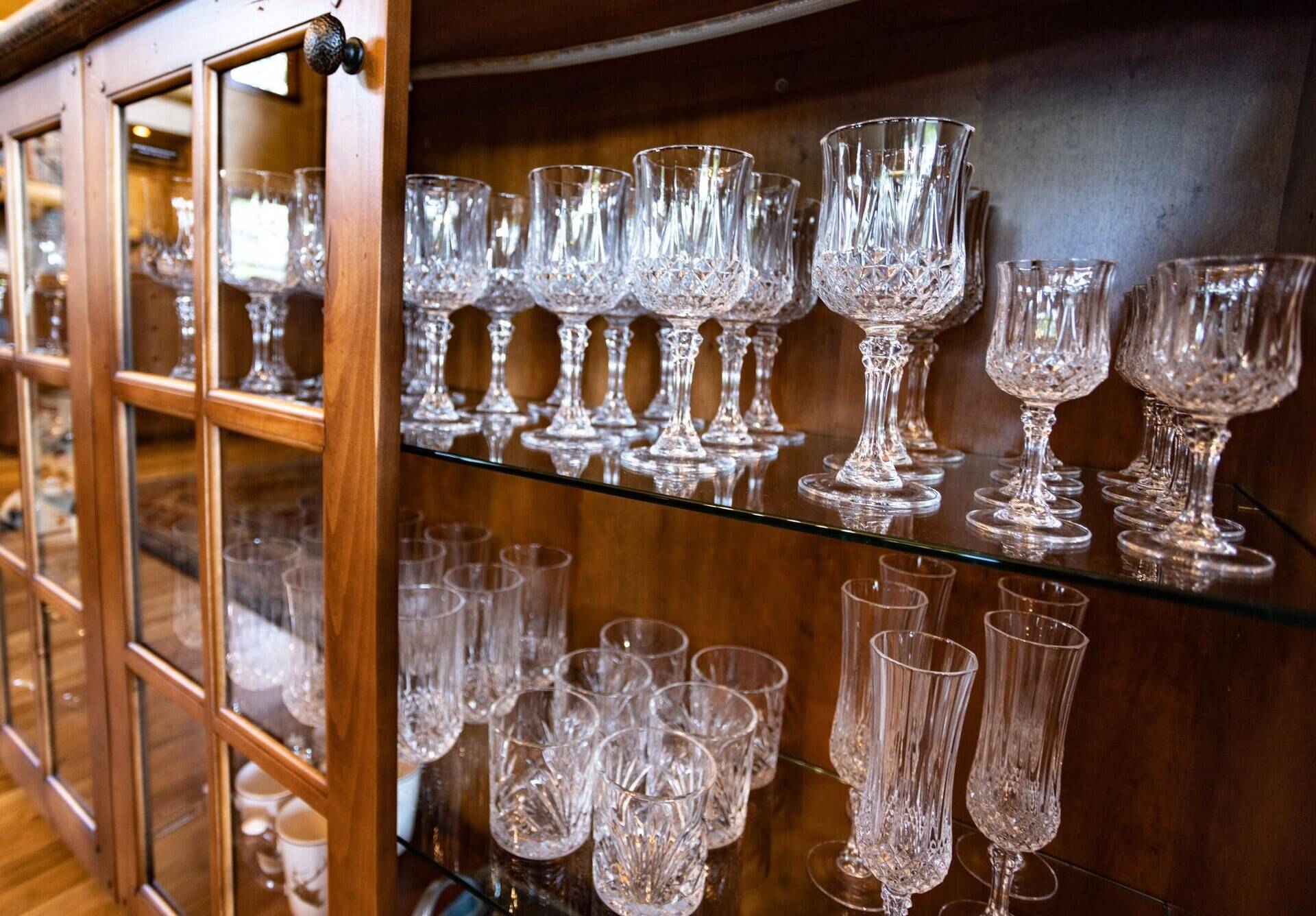
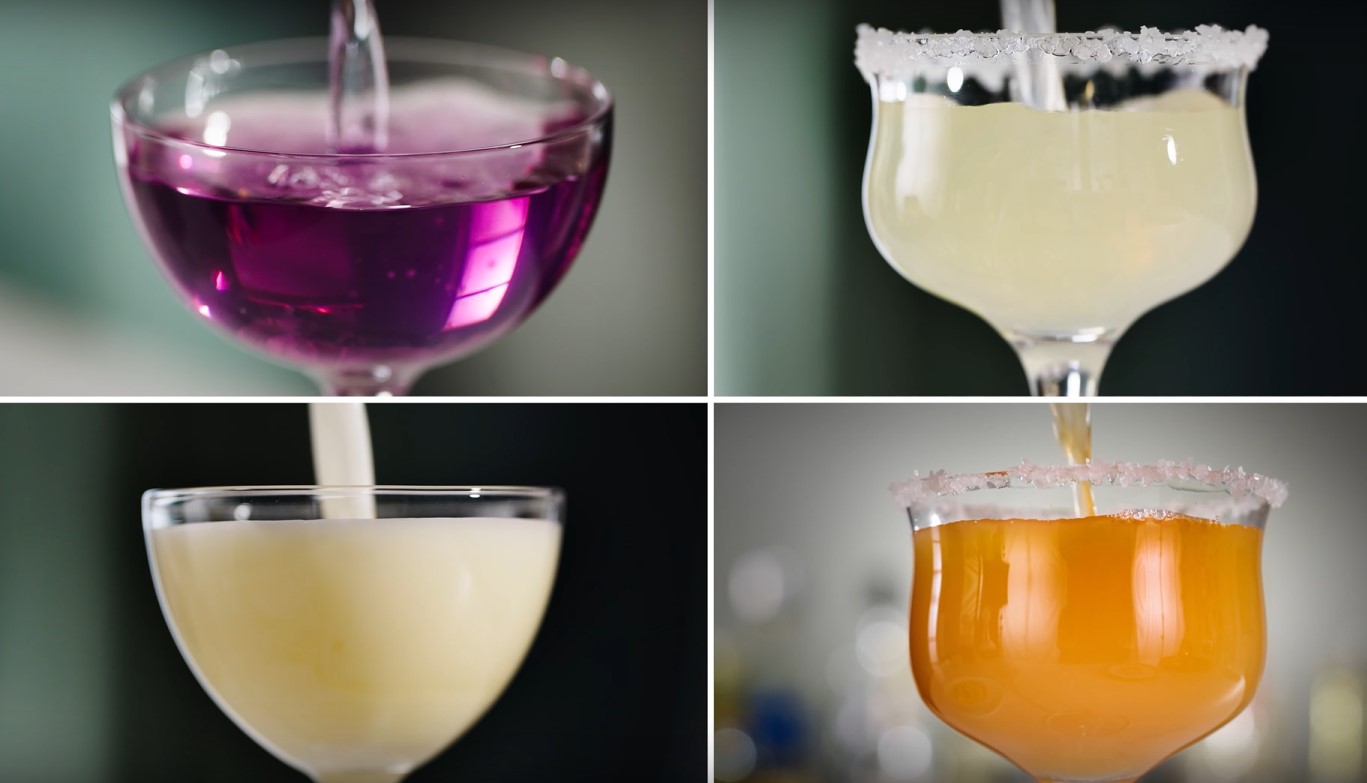
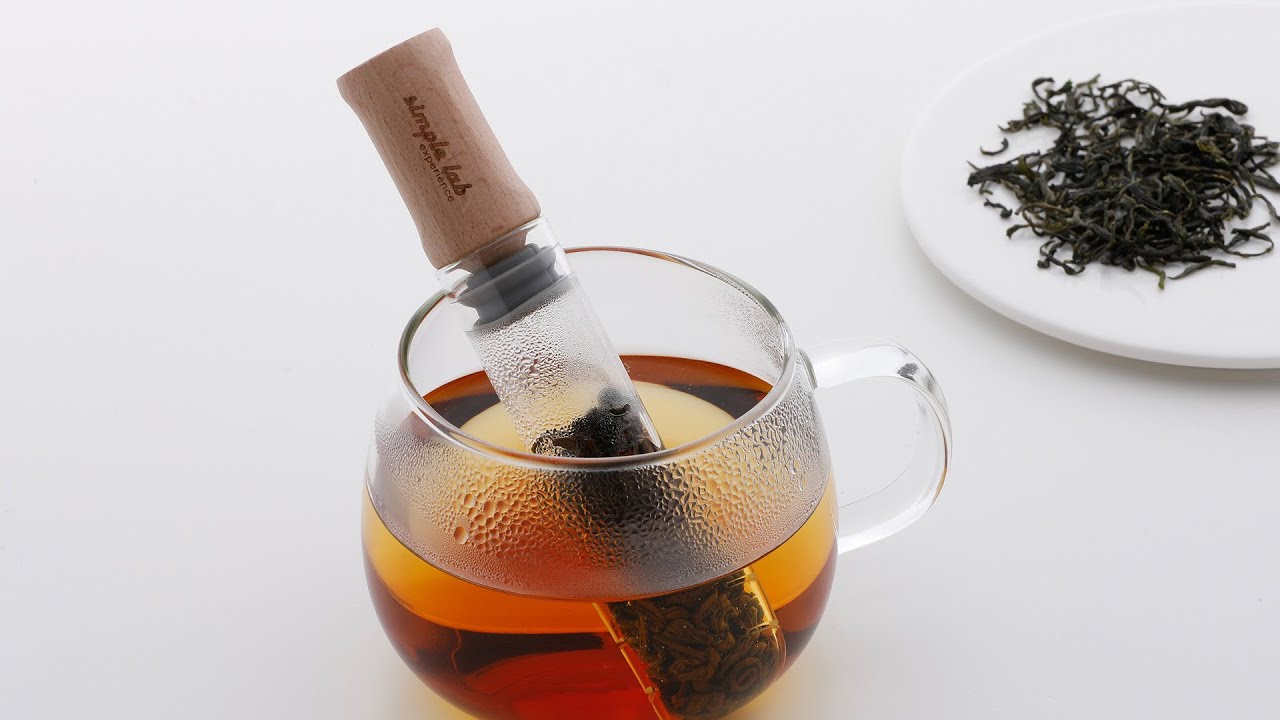
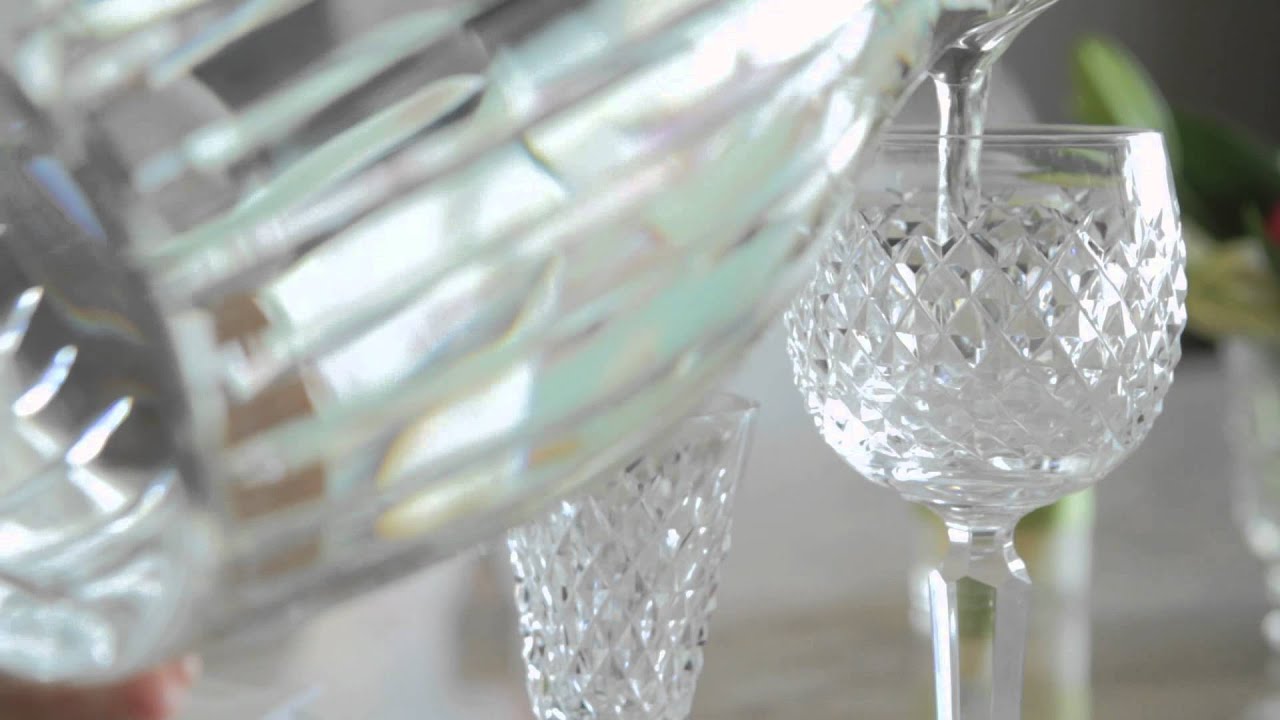
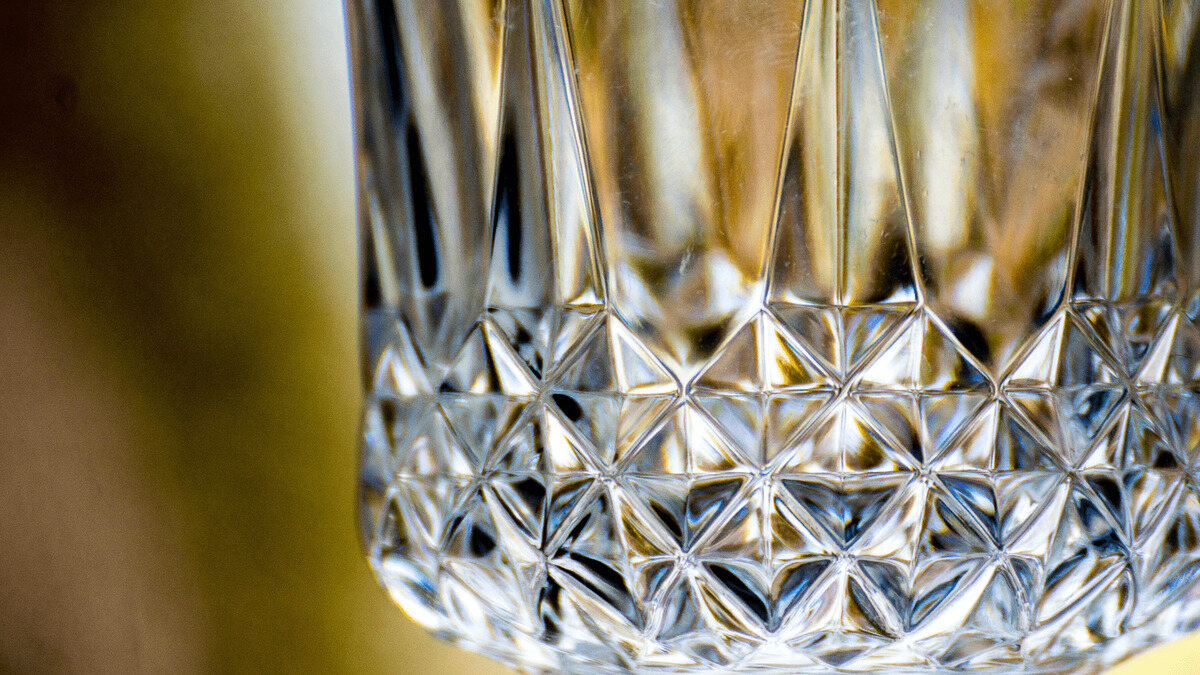
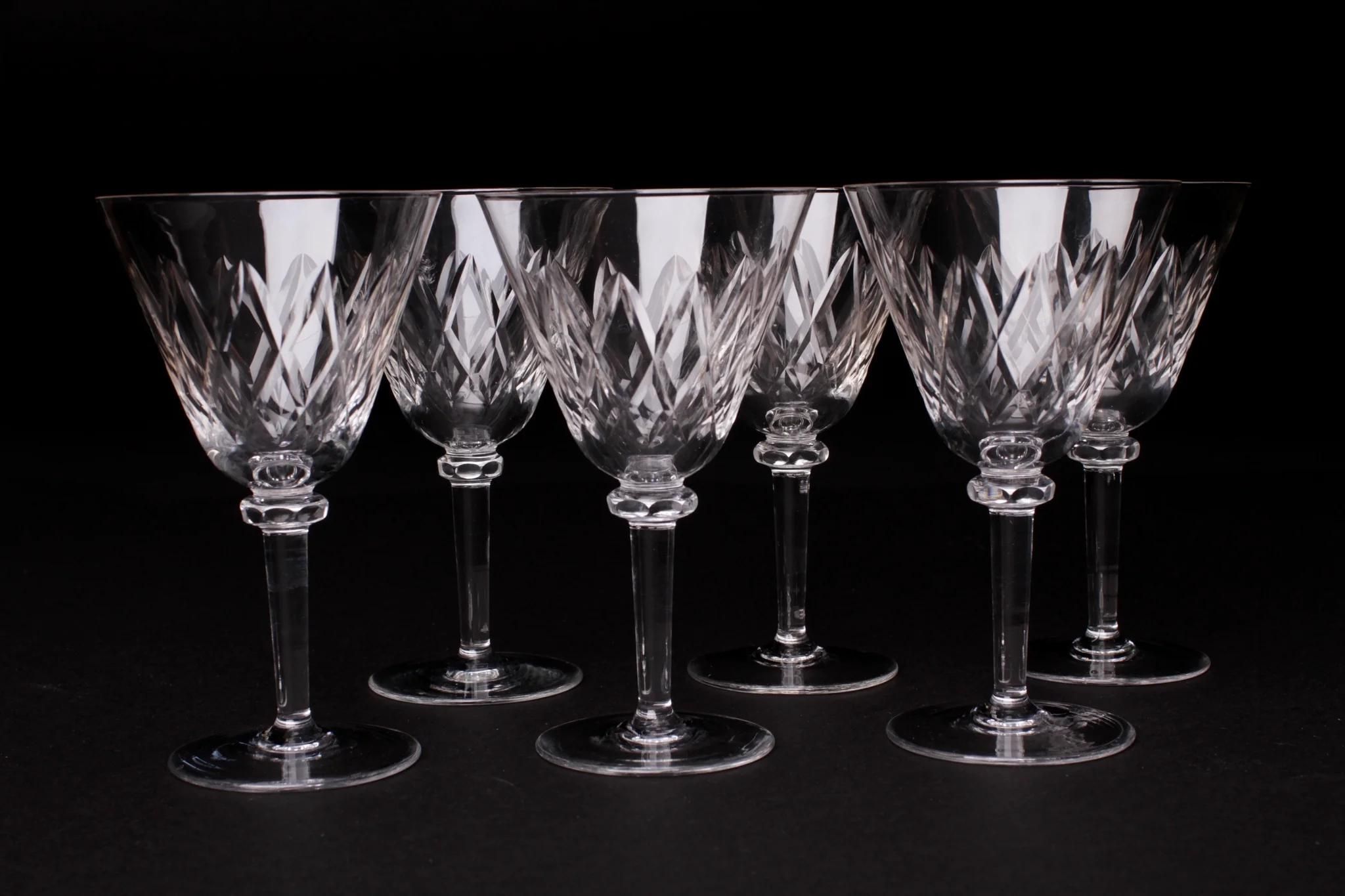
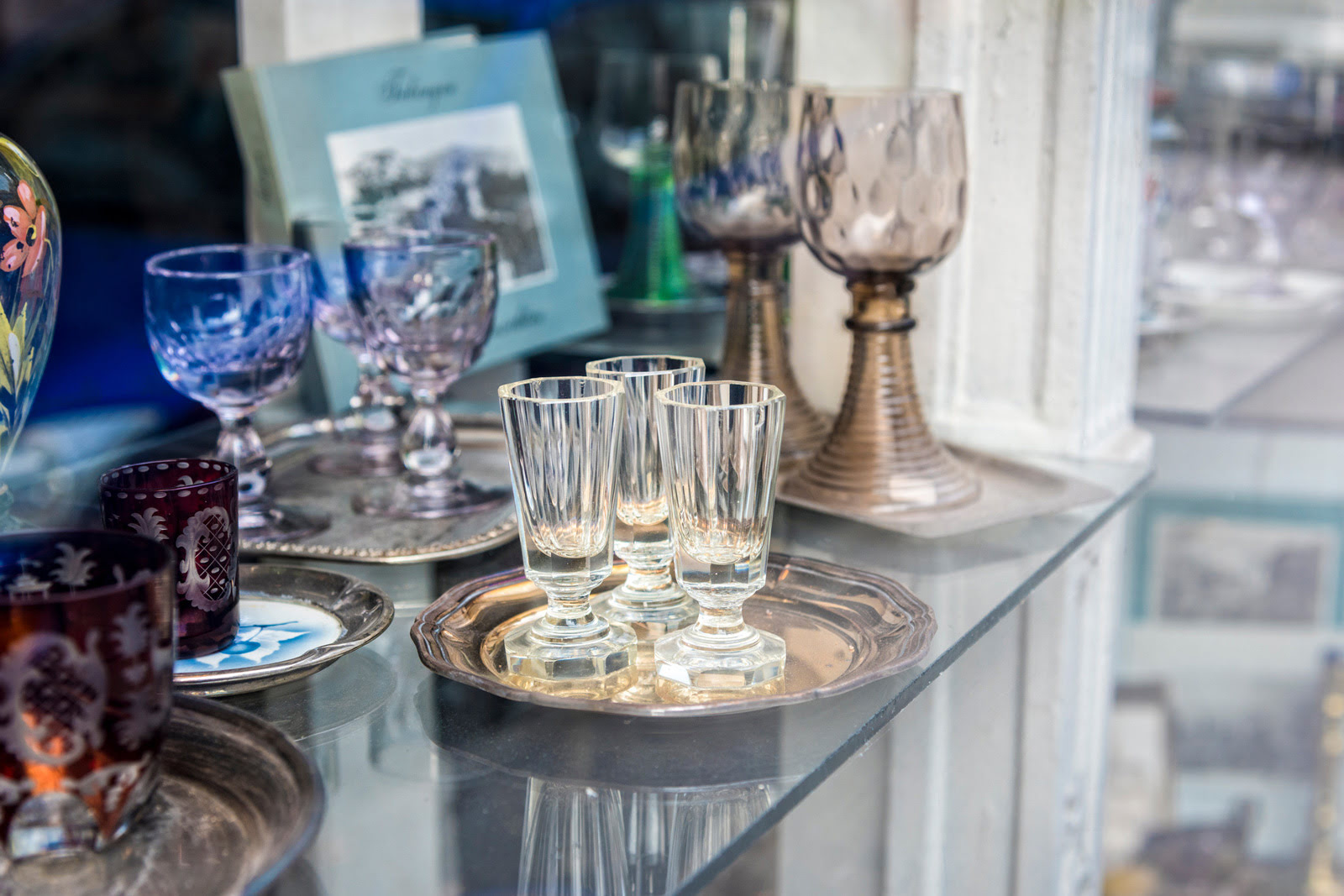
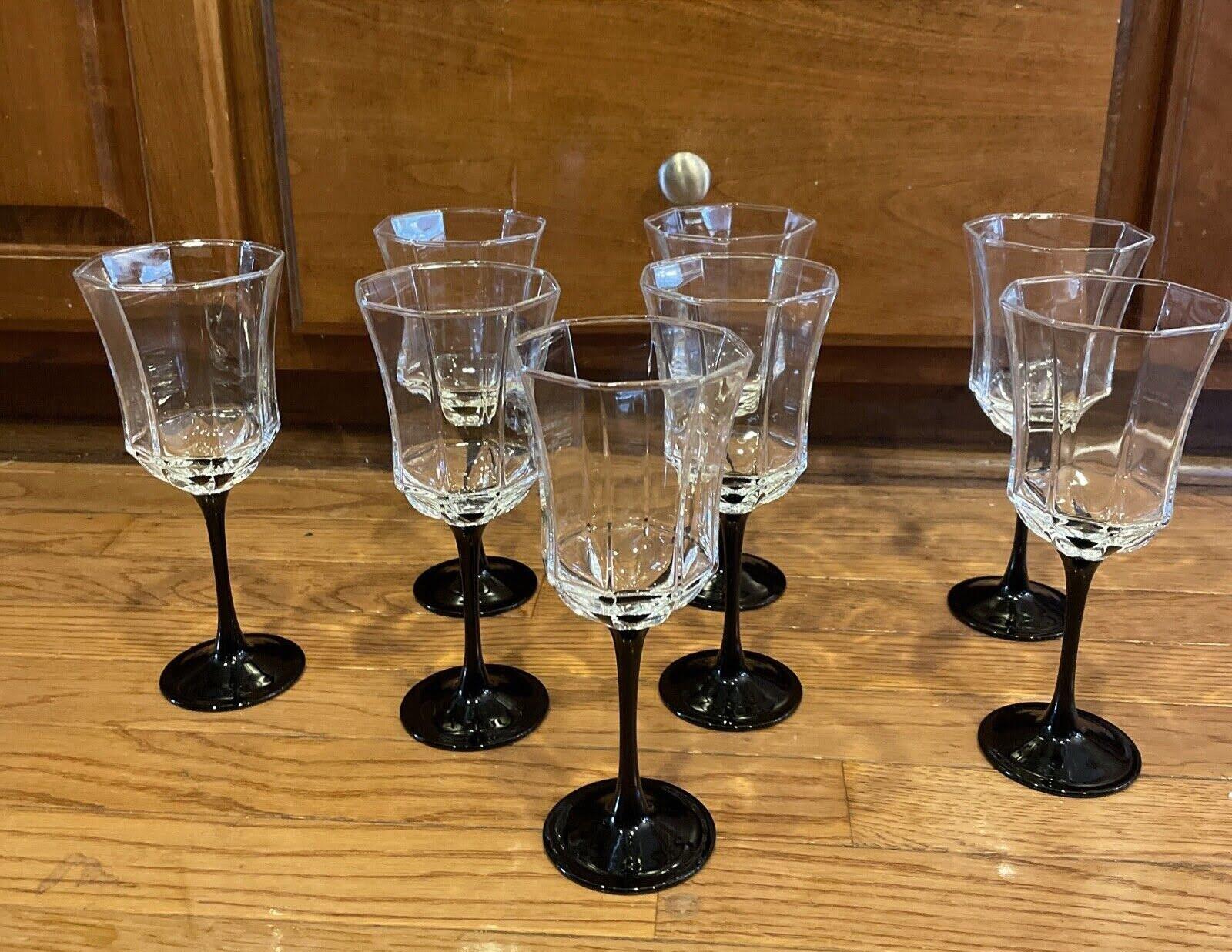
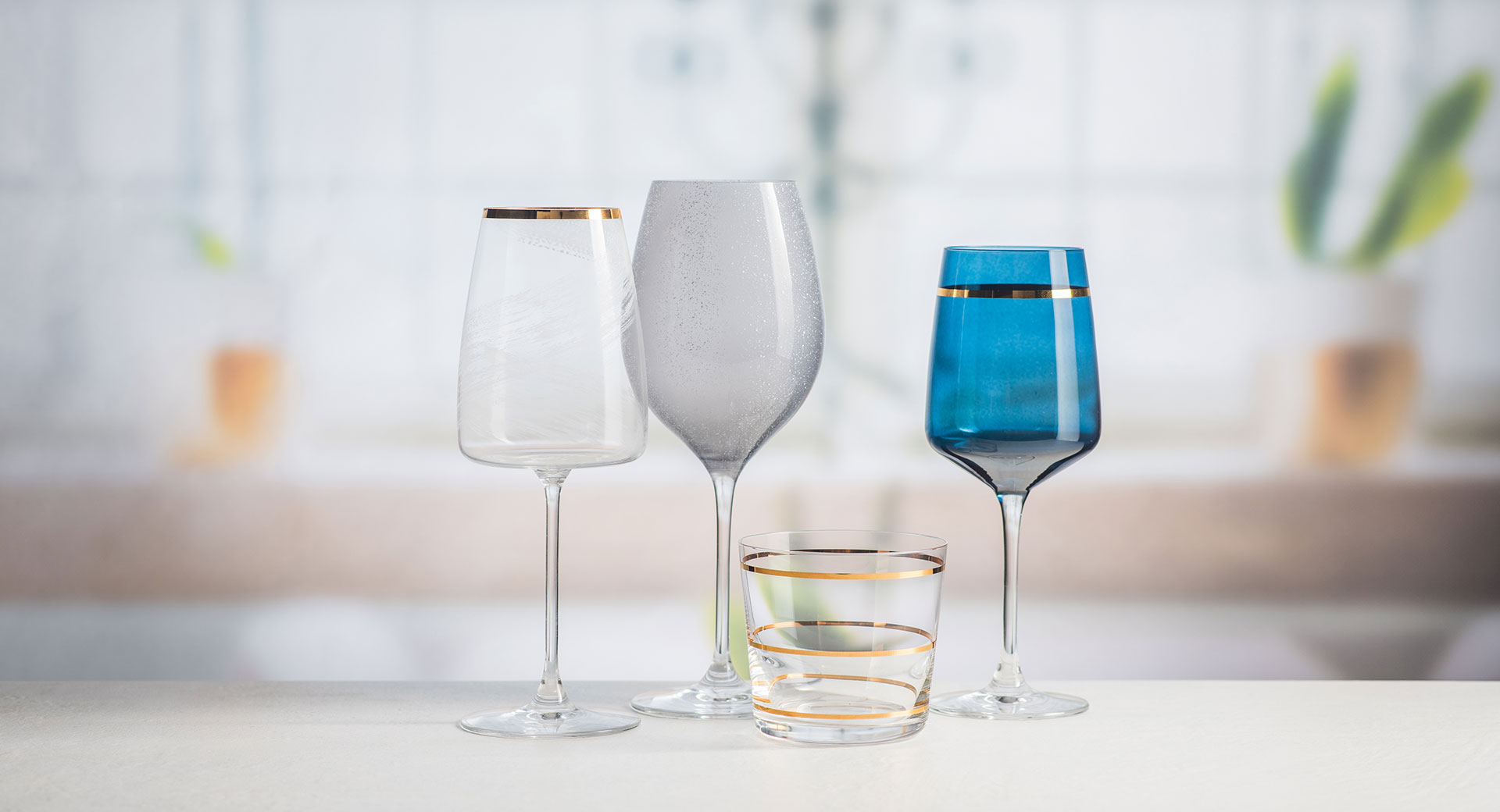
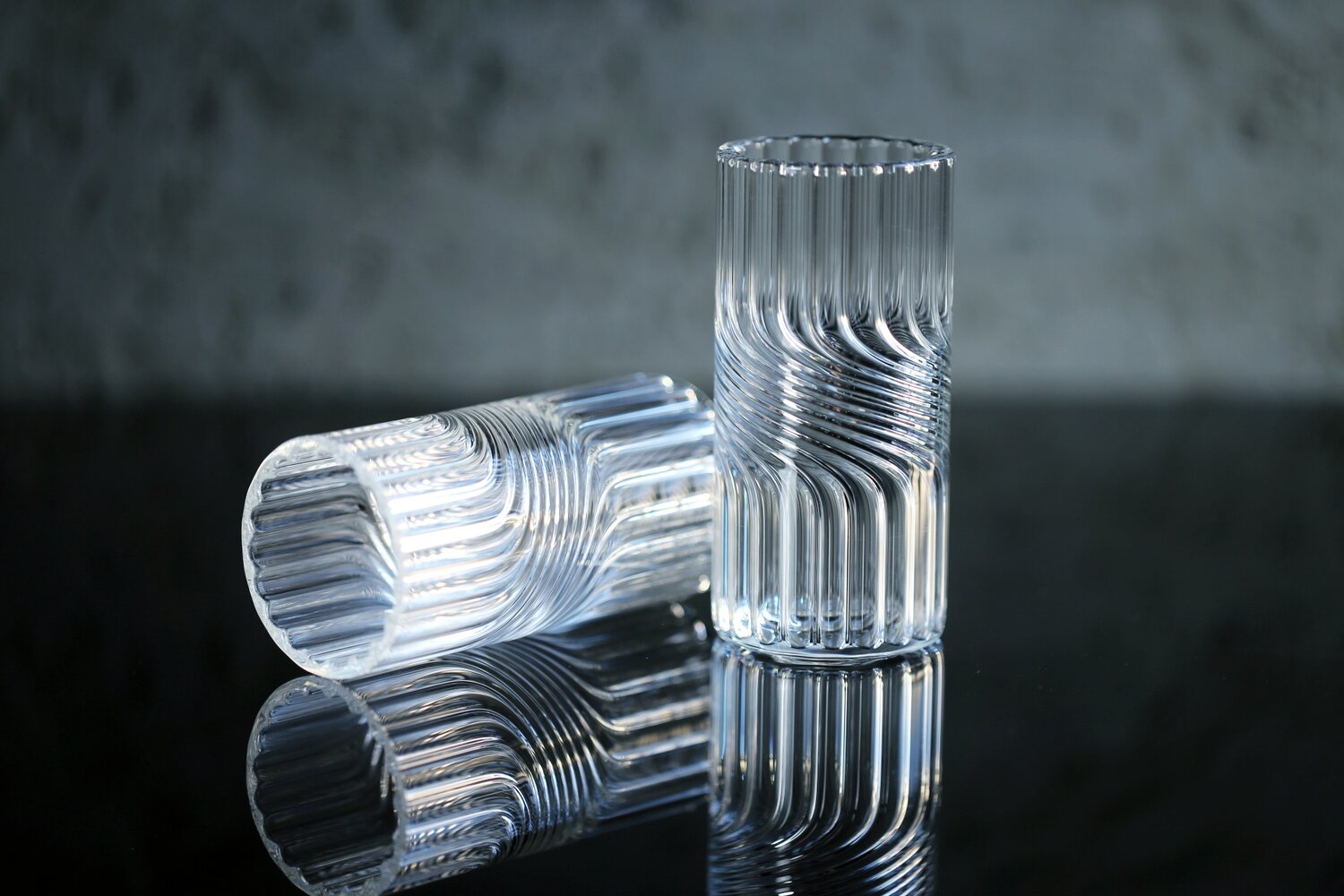
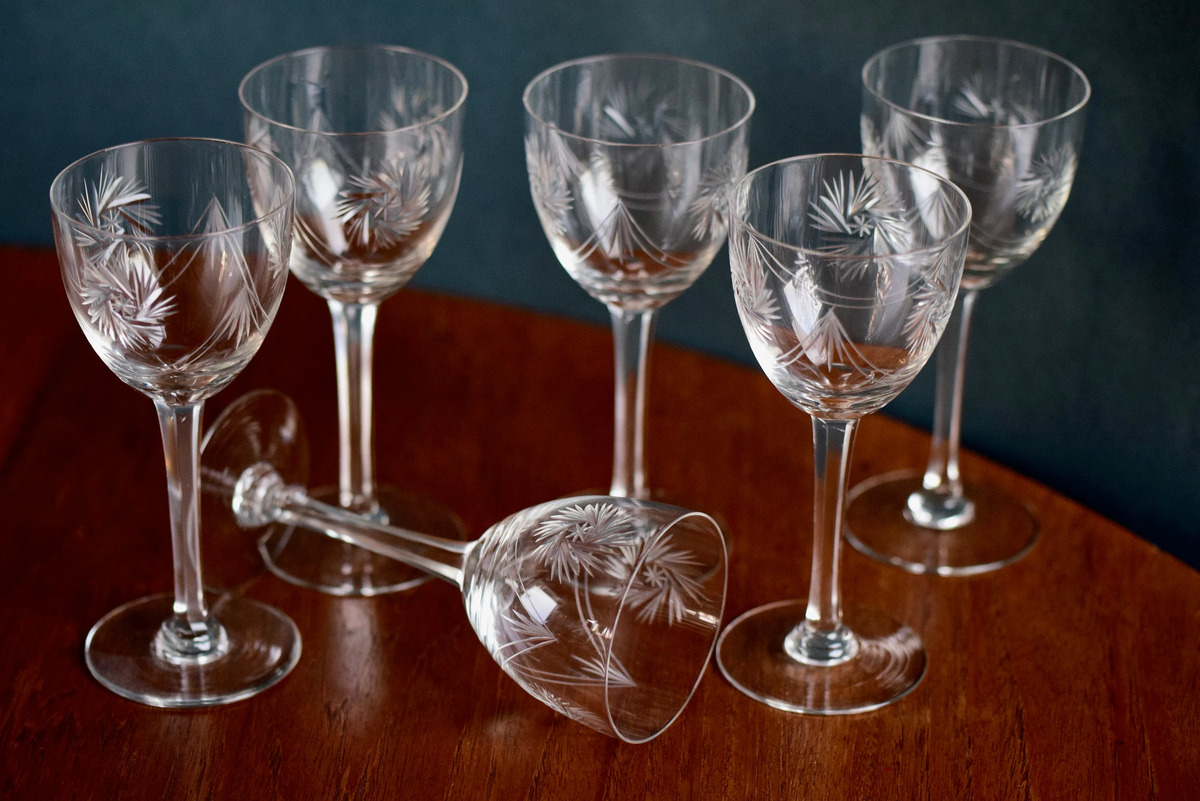

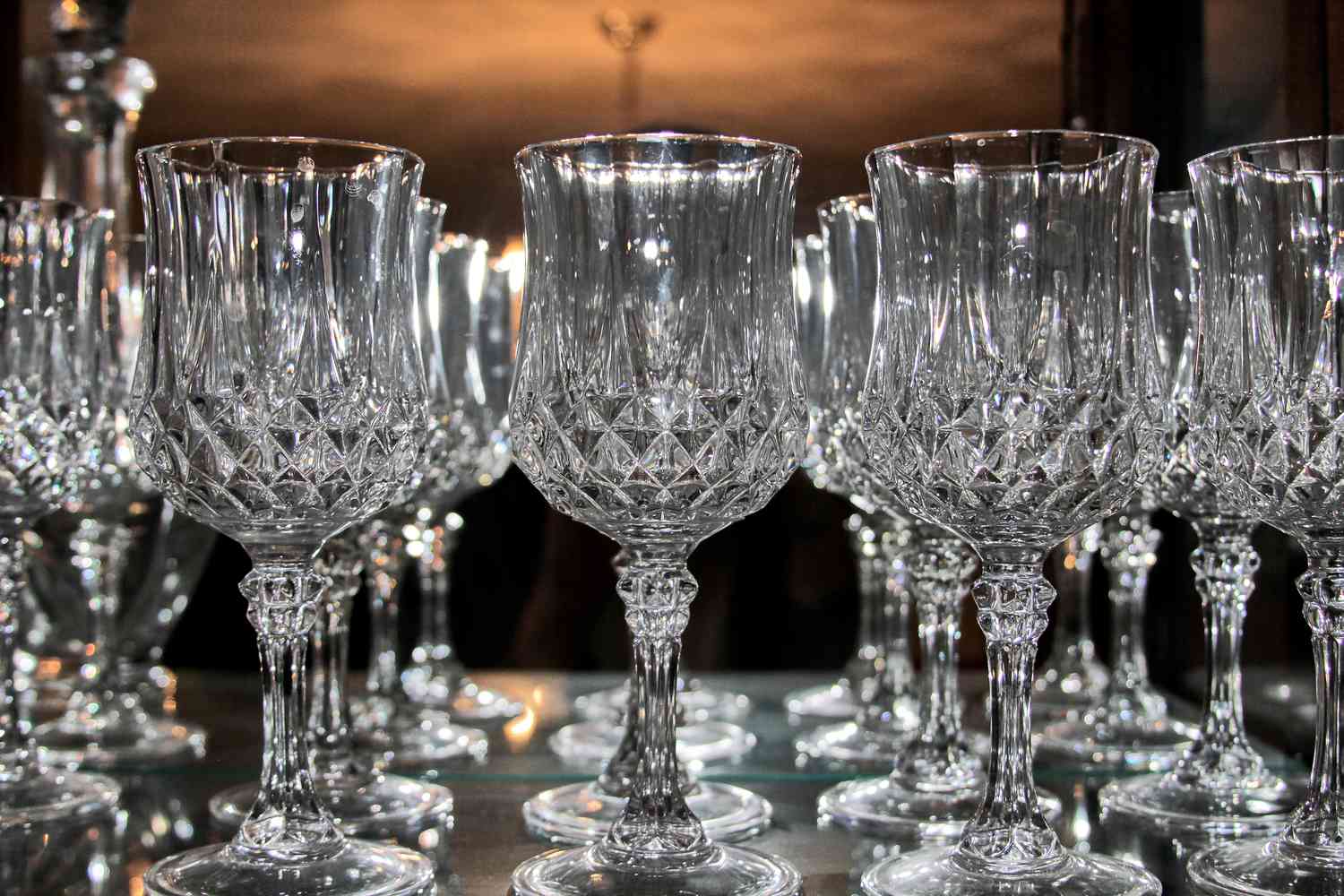

0 thoughts on “What Is Crystal Glassware”